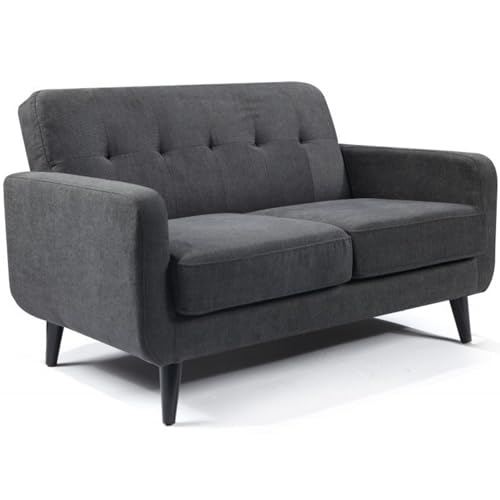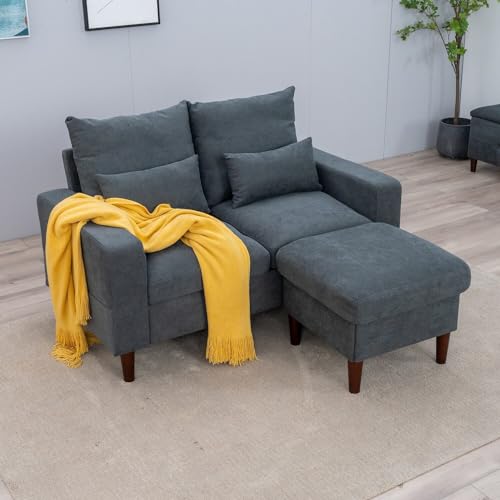Guide To 2 Seater Leather And Fabric Sofa: The Intermediate Guide The …
페이지 정보

본문
 Choosing Between a 2 seater fabric sofa uk small 2 seater fabric sofa leather And fabric Sofa [xypid.win]
Choosing Between a 2 seater fabric sofa uk small 2 seater fabric sofa leather And fabric Sofa [xypid.win]It isn't easy to decide between fabric and leather when you're looking for a new sofa. This is particularly relevant if you're new to experience with furniture.
If you have children or live in a small two seater fabric sofa apartment, the leather option may be the best choice for you. It is easy to clean and looks stunning in a lot of homes.
Comfort
A sofa is the main focal feature of many people's living areas and is a major purchase. You want a sofa can be sat on for many hours and looks stunning and stands the test of time. It isn't easy to decide between fabric and leather, but you must consider your lifestyle, budget and priorities before making a decision.
Leather is a premium material that is soft and luxurious and is elegant in a home. It is tough and stain-resistant. It is also resistant to pets and children, and can last for a long time when properly taken care of. It can be expensive initially and may require regular conditioning to avoid cracking or peeling.
Fabric sofas are available in a huge variety of styles, colours and fabrics and can be cheaper than a leather one. They are also softer and more cosy, and can be "broken in" right from the beginning. They could be more vulnerable to dust mites and hairs from pets and require more frequent cleaning. However, thanks to advances in technology and high-performance fabrics, there are now hypoallergenic options to choose from.
The longevity of a sofa made from fabric will depend on the quality of the material however, most fabrics will last up to 15 years if properly taken care of. Regular vacuuming and deep cleaning aid in keeping the fabric clean and free of odours and spills. They also tend to be stretched and flatten as time passes, just as leather. In addition, a lot of fabric couches are treated with chemicals to make them stain-resistant as well as flame-resistant. They can release volatile organic chemicals that could cause allergic reactions and alter the quality of indoor air.
Durability
We usually choose sofas made of fabrics that are extremely durable, particularly if you have pets or children. You don't have to spend lots of money in the beginning when you're likely to regret it after the first stain or claw. In the same way you don't want to buy something that's cheap but isn't durable enough for daily use.
Leather is also extremely durable with a tremendous tear strength. It can last up four times longer than fabric and is resistant against cracking, fading, and flaking. It can be treated to replenish its natural oils, and to make it appear new.
Fabrics are a cheaper alternative and are available in a variety of colors, patterns, and textures to match any interior design scheme. They are also easier to clean than leather and can withstand a fair amount of wear and tear, however, they can be more prone to moisture and be susceptible to fading in time.
Microfiber is durable and comes in a variety of colors. However, it might not be as durable as genuine leather. It might also not be able to take scratches. But, it's an ideal choice for families because of its resilience to stains and spills and it is easy to clean generally with a damp cloth.
Suede On the other hand, is difficult to keep clean and can be more difficult to repair than leather. It is also prone to losing its shape if it is not regularly maintained and can feel very rough to the feel. It is also a thin material which means it may not be as durable as cowhide and sheepskin leather.
Allergens
Fabrics can have a major impact on allergies. It is important to understand how different options perform. Fabrics are known to hold allergens such as dust mites and pet dander which can trigger symptoms like hay fever, asthma, rhinitis and eczema. These fabrics are perfect for them to flourish.
The leather, however is not a reservoir of these allergens, and provides a consistent level of comfort, regardless of the season. It can also trigger dermatitis in people who have contact dermatitis, or are sensitive to the chemicals used in tanning. Using vegetable-tanned leather as well as maintaining a vigilant skincare regimen are essential for mitigating skin reactions.
 Both leather and fabric sofas are durable, but the material you select will have a significant impact on how your couch can stand up to wear. A good quality fabric will stand up to daily usage without fading or sagging and will withstand spills and body oils easily. Modern sofas come with stain-resistant treatments which make cleaning up easy.
Both leather and fabric sofas are durable, but the material you select will have a significant impact on how your couch can stand up to wear. A good quality fabric will stand up to daily usage without fading or sagging and will withstand spills and body oils easily. Modern sofas come with stain-resistant treatments which make cleaning up easy.It is not possible to completely avoid an allergic reaction to the leather in your sofa but you can avoid allergens if you keep an lint-roller in your home and regularly clean your living space. This will lessen the amount of dirt, pet hair, and dust mites on your sofa. If you're still suffering from allergies, you can replace your sofa with a more hypoallergenic one. For instance, a sofa made of synthetic or vinyl is less likely to collect dust mites and pet dander. It also can help you breathe more easily.
Scratches
It is crucial to think about the amount of wear you can anticipate the leather sofa to endure. The finish, colour and the quality of the leather are crucial aspects in how long a sofa will last. You should also make sure it is durable to withstand spillages or other accidents. This can be accomplished by searching for a sofa with a strong hardwood frame and high-density foam cushions.
Leather can be damaged by a variety of reasons such as stretching it, marking territory or the reliving of tension. Scratches can be severe in severity, ranging from minor surface scratches to severe punctures and cuts. Minor scratches can be repaired by applying a conditioner for leather to the affected area. This will help restore the equilibrium of moisture and oil in the leather, preventing drying out and cracking. The extent of damage will determine the treatment needed.
If you have pets, it's an ideal idea to trim their nails regularly, as this will help to prevent scratching on your couch. You can also stop their scratching behaviour by providing them with alternative scratching surfaces, such as sisal rope or cardboard. You can also use a pet-safe furniture polish which you can apply using a soft clean cloth.
In addition to cleaning your leather sofa regularly, it is also a good idea to keep it from direct sunlight and heat sources because this could dry out the leather. This could cause cracks in the leather. Repairing this can be difficult and requires reupholstery. Use a leather conditioner to keep the leather soft.
Smell
Leather couches are known to smell different than fabric. It's because leather is porous, and will absorb odors like smoke, body odors or food. The good news is, the smells will usually disappear after a while particularly when you use a non-toxic and fragrance-free cleaner.
If the smell is overwhelming It could mean that something is wrong with the foam. This is typically caused by the chemical off-gassing of polyurethane based on petroleum. If you're concerned about this, look for couches made of CertiPUR US certified latex foams or natural latex.
Another method to detect fake leather is to feel for bumps or texture on the back of the sofa. This indicates that the leather is not genuine top grain. You can also do an examination by laying the sofa on its side and observing any visible upholstery backing. If you are able to smell it, it's probably a synthetic material like polyester or polyurethane. These materials will have a different scent than leather.
A leather sofa is more likely to be prone to absorbing smells, the most effective method to avoid this is to regularly clean your sofa. This will keep it looking its best and smelling great as well as preventing it from becoming stiff or cracking as time passes. Begin by vacuuming and dusting, then wiping the couch with baking soda (a natural way to eliminate smells). This should be done every two weeks to get rid of any dirt or dust. Then apply a leather conditioner to preserve your sofa's color and texture.
- 이전글BetonRed Casino – hodnocení pro fanoušky hazardu s bonusy a tipy na registraci 24.12.08
- 다음글For Whom Is Car Stolen Lost Spare Key And Why You Should Consider Car Stolen Lost Spare Key 24.12.08
댓글목록
등록된 댓글이 없습니다.


